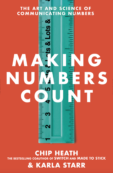It’s impossible to have an intuitive feel for a big number, like $1.2 trillion. It puts our intuition on TILT. We have a very real sense of how $1,200 is different than $200. With $1,200, you can make a mortgage payment (at least in my part of the country). With $200, you pay the cable & utility bills. But we have no intuitive feel for how $200 billion might be different than $1.2 trillion. What can you do with $1.2 trillion that you can’t do with $200 billion, or $50 billion? What is $1.2 trillion worth? And how do you manage to communicate its worth to others?
David Leonhardt of the Times has written a brilliant and hugely important column that grapples with this issue in the context of the Iraq war. It is essential reading.



